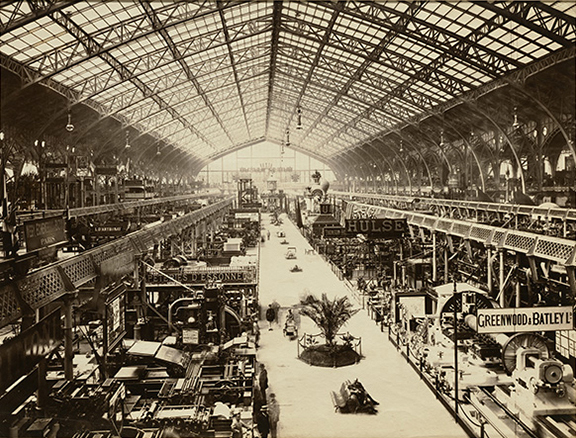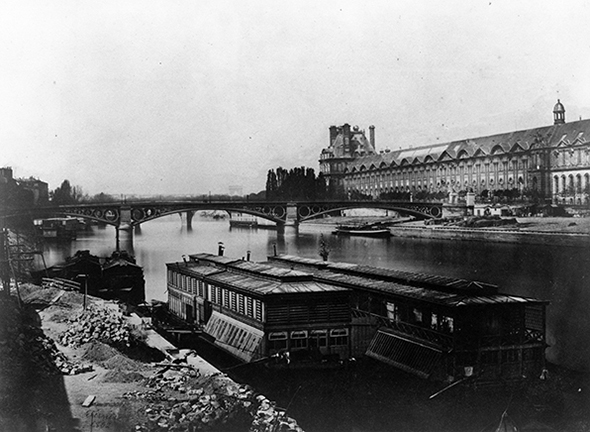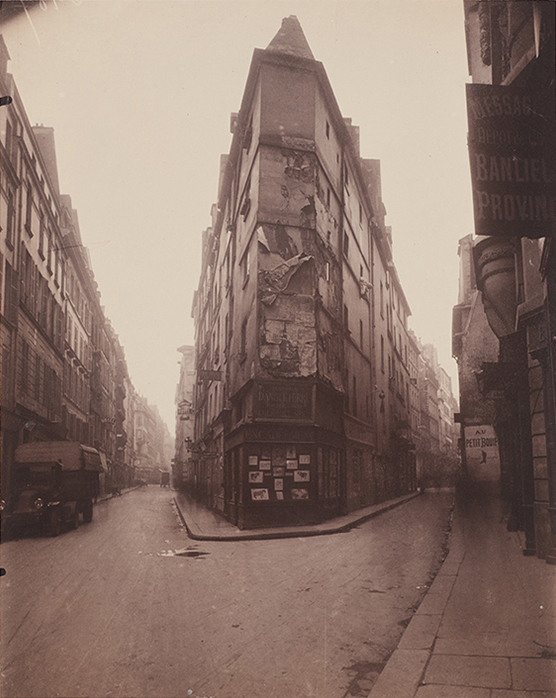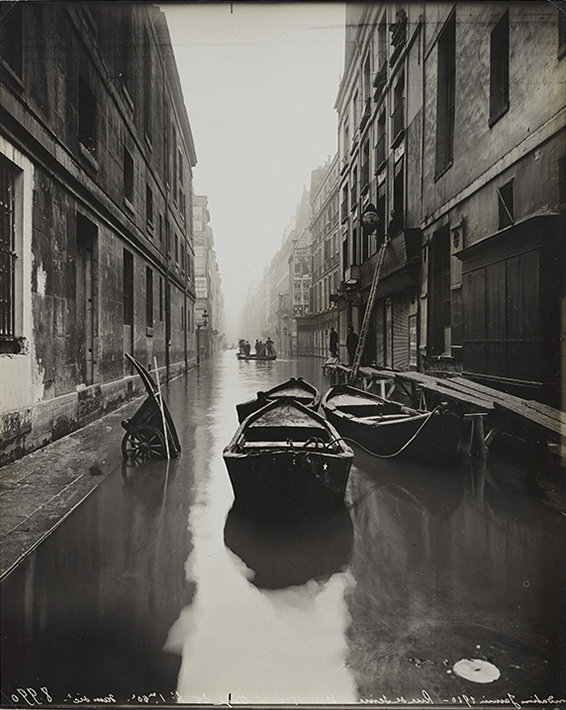
JULY 1–SEPTEMBER 23, 2018
PHOTOGRAPHIC PROCESSES
Louis Lafon (French, active 1870s–1890s)
Gallery of Machines, World’s Fair of 1889
1889
Albumen print
Lent by The Troob Family Foundation
Albumen print: The most common photographic process used during the second half of the nineteenth century, the albumen print is characterized by its glossy surface. In this process, a sheet of paper is coated in a combination of ammonium or sodium chloride and fermented egg white (albumen). After coating, the paper is immersed in a bath of silver nitrate, which makes it sensitive to light. The sheet is then placed in a frame with a glass or paper negative and exposed to light. Following exposure, the paper is fixed with a sodium solution, washed in a water bath, and finally the print is dried.
Claude Marie Ferrier (French, 1811–1889)
The Seine, Paris
1852
Salt print
Clark Art Institute, 1998.32.4
Salt print: To create a salt print, a sheet of paper is first coated with salt and silver nitrate, making it photosensitive. The sheet is then placed in contact with a negative and exposed to light. Finally, the sheet is washed, fixed, and dried. Salt prints are characterized by their hazy, soft tonality.
Eugène Atget (French, 1857–1927)
Corner of the rue de Seine and rue de l'Échaudé
c. 1919
Arrowroot print
Clark Art Institute, 1998.39.1
Arrowroot print: Arrowroot prints became popular in the mid-nineteenth century, when it was discovered that the fine-grained starch obtained from the tropical tuber, when boiled into a paste, served well as a binder in salted photographic papers. The surface qualities of paper coated with arrowroot paste are often quite matte. Though a variety of processes had become available to photographers by the turn of the century, arrowroot prints enjoyed somewhat of a revival, admired for their brilliance and rich density range.
Artist Unknown (French, 20th century)
Paris Flood, Street with Boats and Cart, January 27–31, 1910
1910
Gelatin silver print
Lent by The Troob Family Foundation]
Gelatin silver print: The commercial development of the gelatin silver print in the 1880s revolutionized the medium of photography and ushered in the age of the amateur photographer. The process requires specially prepared paper that has been coated with a solution of silver salts in gelatin. Such paper, which also held a layer of baryta (barium sulfate), could be machine-made, omitting the need for a photographer to create emulsions to sensitize paper. When exposed to light through a negative, the treated paper produces an image. After exposure, the paper is submerged in developing solution and fixed.




